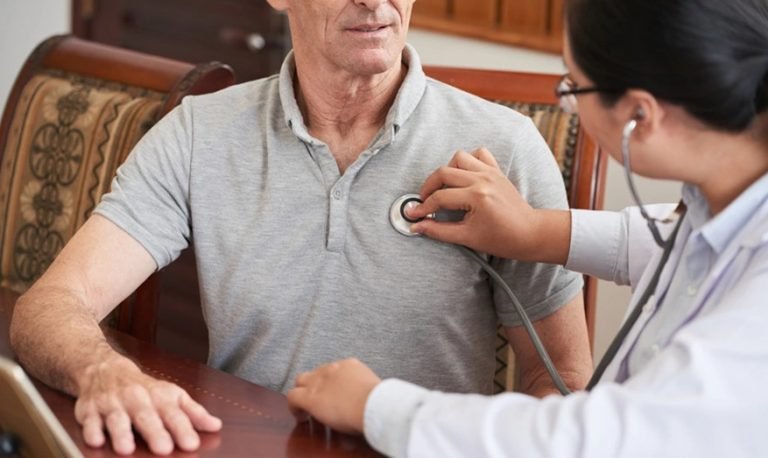Orthopedics for an Active Life: How to Care for Your Bones and Joints at Any Age

Maintaining an active lifestyle is important for physical and mental health at any age, but it also puts stress on the bones and joints. Our bones, joints, muscles, and connective tissues are all part of the musculoskeletal system, which is essential for movement and stability. Orthopedics, the branch of medicine that focuses on this system, emphasizes both prevention and treatment of injuries and conditions to help people stay mobile and pain-free.
This blog is about how to take care of your bones and joints so you can enjoy an active life, regardless of your age.
1. Start Early: Building Strong Bones in Childhood and Adolescence

The foundation for strong bones is laid in childhood and adolescence. During these years, bones grow rapidly and reach peak bone mass, which is critical for bone health throughout life. Key ways to support bone health in the early years include:
- Adequate Calcium and Vitamin D: These are the building blocks of bone health. Calcium strengthens the bone matrix, while vitamin D helps the body absorb calcium. Children and adolescents need approximately 1,000–1,300 mg of calcium daily.
- Weight-Bearing Exercise: Activities like running, jumping, and gymnastics stimulate bone growth. Regular exercise builds stronger bones that are more resistant to fractures.
- Avoiding Soda and Sugary Beverages: These can lower calcium levels, especially if they contain phosphates. Drinking water or milk is a healthier choice.
2. Maintaining Bone Density in Adulthood

From the late 20s onwards, bone density gradually begins to decrease. However, you can take preventive steps to slow this process and maintain strong bones:
- Continue Weight-Bearing Exercises: Activities like brisk walking, hiking, dancing, or lifting weights help keep bones strong. Even 30 minutes a day, most days of the week, can make a difference.
- Calcium and Vitamin D Intake: Adults need about 1,000 mg of calcium per day, increasing to 1,200 mg after age 50. Vitamin D helps absorb calcium effectively; aim for 600–800 IU daily, depending on age.
- Regular Health Checkups: Monitoring bone density, especially for women post-menopause, is important. Early identification of low bone mass can help prevent osteoporosis, a condition that weakens bones and increases fracture risk.
3. Protecting Joints Throughout Life

Our joints, places where bones meet, like the knees, hips, and shoulders,play a vital role in movement. They’re cushioned by cartilage, lubricated by synovial fluid, and stabilized by ligaments and tendons. Here’s how to keep your joints in optimal shape:
- Manage Weight: Excess weight strains joints, especially weight-bearing ones like hips, knees, and ankles. For every pound of weight lost, there’s a fourfold reduction in knee stress, which can be transformative for joint health.
- Low-Impact Exercise: Swimming, cycling, and yoga are gentle on the joints, helping maintain range of motion without stressing them.
- Muscle Strengthening: Strong muscles around the joints, particularly in the core, thighs, and hips, can help absorb impact and reduce joint wear and tear.
- Stay Flexible: Regular stretching improves joint flexibility and reduces the risk of injury. Yoga and Pilates are excellent for increasing flexibility and balance, protecting joints from strain and injury.
4. Preventing Injuries During Physical Activity

An active lifestyle comes with the risk of injury. Preventing common orthopedic injuries, such as sprains, strains, and fractures, requires a combination of precaution and conditioning:
- Warm-Up and Cool-Down: Always prepare your muscles and joints with a warm-up session before vigorous exercise, and end with a cool-down stretch to prevent stiffness.
- Proper Equipment and Footwear: Wear appropriate shoes for your activity, as well as any necessary protective gear (such as knee or wrist braces) to avoid unnecessary strain or impact.
- Listen to Your Body: Overdoing it or ignoring pain can lead to injury. Take breaks, rest when needed, and gradually increase the intensity of your workout.
5. Adapting to Age-Related Changes in Bone and Joint Health

As we age, bone density decreases, cartilage thins, and muscles may lose strength, making injuries more common. However, older adults can still protect their bones and joints with targeted approaches:
- Bone Density Screenings: Bone density tests, often recommended after age 65, help detect osteoporosis and inform treatment options.
- Strength and Balance Training: Falls are a major cause of fractures in older adults. Strength exercises for the legs and balance activities, like Tai Chi, can reduce the risk of falls.
- Joint-Friendly Physical Activities: Swimming, water aerobics, and stationary cycling offer cardiovascular and muscular benefits without putting stress on the joints.
- Pain Management Strategies: For those with arthritis, applying heat or cold packs, using over-the-counter pain relievers as directed, and maintaining an anti-inflammatory diet can ease joint pain.
6. Nourishing Your Musculoskeletal System

Diet plays an important role in bone and joint health. In addition to calcium and vitamin D, there are other nutrients that can support musculoskeletal health:
- Magnesium and Phosphorus: These minerals work with calcium to strengthen bones. Sources include nuts, seeds, whole grains, and green leafy vegetables.
- Omega-3 Fatty Acids: Found in fish, flaxseeds, and walnuts, omega-3s reduce inflammation and may help with joint pain.
- Vitamin K: Leafy greens like kale, spinach, and broccoli contain vitamin K, which supports bone metabolism and helps maintain bone density.
- Protein: Protein is essential for muscle health, which supports and stabilizes joints. Include lean meats, fish, eggs, dairy, legumes, and plant-based proteins in your diet.
7. When to Seek Medical Care

Sometimes, joint or bone pain can be a sign of a more serious condition, such as a fracture, arthritis, or an orthopedic injury requiring treatment. Seek medical attention if you experience:
- Persistent Pain or Swelling: If pain persists for more than a few days or is accompanied by swelling, stiffness, or reduced mobility, consult an orthopedic specialist.
- Inability to Bear Weight: If you experience severe pain or difficulty bearing weight on a limb, it could indicate a fracture or significant soft tissue injury.
- Visible Deformity or Loss of Function: Sudden deformities, loss of motion, or joint instability warrant immediate medical attention.
8. Innovations in Orthopedic Care

Modern orthopedic care includes a variety of options for managing and treating bone and joint conditions, including:
- Physical Therapy: Tailored exercise programs can restore mobility, strength, and function after injury or surgery.
- Minimally Invasive Surgeries: Techniques such as arthroscopy allow for smaller incisions, faster recovery times, and less postoperative pain.
- Joint Injections: Corticosteroids, hyaluronic acid, and regenerative therapies like platelet-rich plasma (PRP) injections are options for managing pain and inflammation in joints.
- Joint Replacement Surgery: For advanced arthritis, joint replacement can restore mobility and significantly improve quality of life.
Keeping Your Bones and Joints Strong for a Lifetime
Orthopedic health is a lifelong commitment that can enhance your quality of life and keep you moving pain-free as you age.
By adopting healthy habits like balanced nutrition, regular exercise, and injury prevention practices, you can support the long-term health of your bones and joints. And remember, listening to your body and seeking medical advice when necessary can prevent minor issues from becoming major problems.
We serve people from various locations, including those seeking the best orthopedic care in Kukatpally, orthopedic specialists in KPHB, and expert orthopedic doctors in Pragathinagar. Our services also extend to JP Nagar for top orthopedic care, Hafeezpet for leading orthopedic hospitals, and Chandanagar for comprehensive bone and joint care. We proudly serve patients across Hyderabad, including Bachupally, Nizampet, and surrounding areas, offering access to the best orthopedic specialists and specialized orthopedic care.















